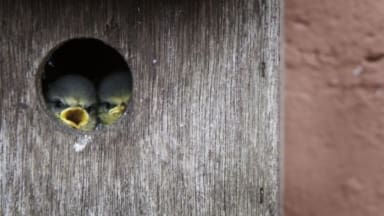
Funded by the UK charity, SongBird Survival, the new study by the University of Sussex found that the fur birds use to build the inner lining of their nests contained chemicals used in pet flea treatments, such as fipronil.
Of the 103 blue and great tit nests, collected by the researchers, they detected 85% of the insecticides screened. 100% of nests contained fipronil – banned in the EU for agricultural use in 2013, and 89% contained imidacloprid – banned in the EU as a plant protection product in 2018. According to the researchers, they found clear evidence that these insecticides are harmful to birds, eggs and chicks, with a higher number of unhatched eggs or dead chicks in nests due to the presence of a higher number of insecticides.
According to earlier research conducted by the University College Dublin and University of Aberdeen (2020), at least 74% of woodland bird species in central Europe line their nests with fur.
The research highlights the damage of these insecticides on birds and wildlife, and the importance of regulating veterinary parasitic drugs. The researchers have stated that a thorough environmental risk assessment of veterinary treatments is currently lacking and are calling on the government to reassess the environmental risk of pesticides used in flea and tick treatments.
Considering the scale of the UK pet population at 10.9 million cats and 10 million dogs, along with 163.1 million livestock, the frequent use of chemicals such as these (shampoo, ‘spot-on’ treatments and/or sprays), the risk to birds and wildlife is clearly evident. Flea treatment pesticides have also been found in rivers, originating from household drains as pet owners wash their hands after usage (Professor Dave Goulson, University of Sussex and researchers from Imperial College London, 2024)
The lead author of the research paper, Cannelle Tassin de Montaigu, Research and Associate Fellow at the University of Sussex confirmed that none of the nests, were free from insecticides and that the significant presence of such harmful chemicals could be having devastating consequences on the UK’s bird populations.
“Our research shows that based on the chemicals detected, veterinary flea and tick drugs are the most likely source of contamination. We undertook our research when it was safe to do so at the end of the breeding season, so the problem could in fact be much worse. This raises questions about the environmental impact of veterinary drugs and calls for a comprehensive environmental risk assessment of veterinary treatments,” explained Tassin de Montaigu.
Sue Morgan, Chief Executive of SongBird Survival said: “We are a nation of pet lovers and bird lovers, and it is extremely concerning to see the alarming levels of toxic pesticides in bird nests from veterinary drugs. Pet owners will be upset to hear that in trying to do the right thing to support their pets with fleas and ticks, they could be harming our ecosystem, resulting in dead newborn chicks and unhatched eggs. As pet owners, we need to have confidence that we are keeping our pets well, without devastating impacts on our wildlife.
“Our UK songbirds are in crisis. More than half of our UK songbirds are threatened or already in decline, which is why this latest research shows the importance of taking action as soon as possible. We want the government to undertake a more comprehensive environmental risk assessment of veterinary drugs.”

